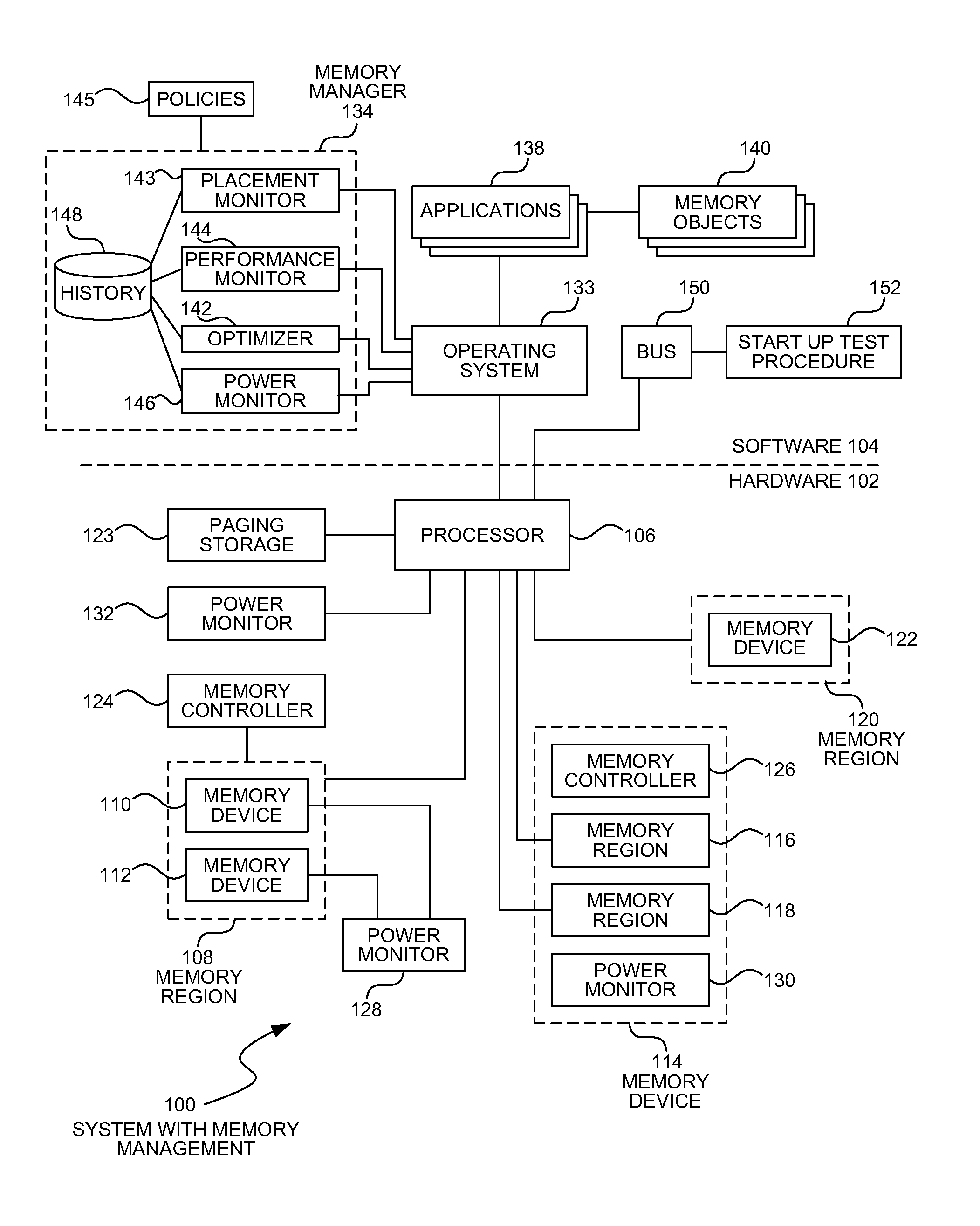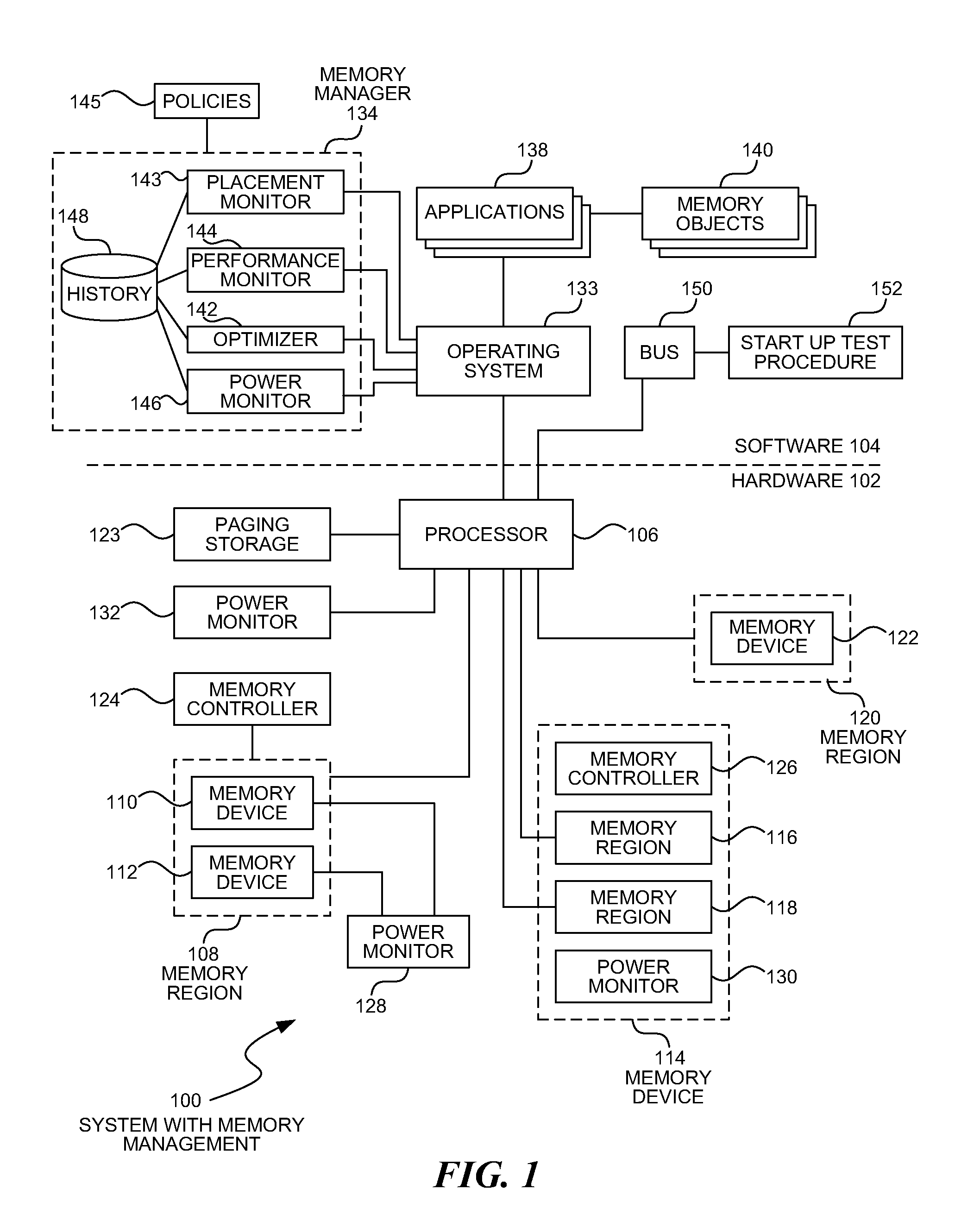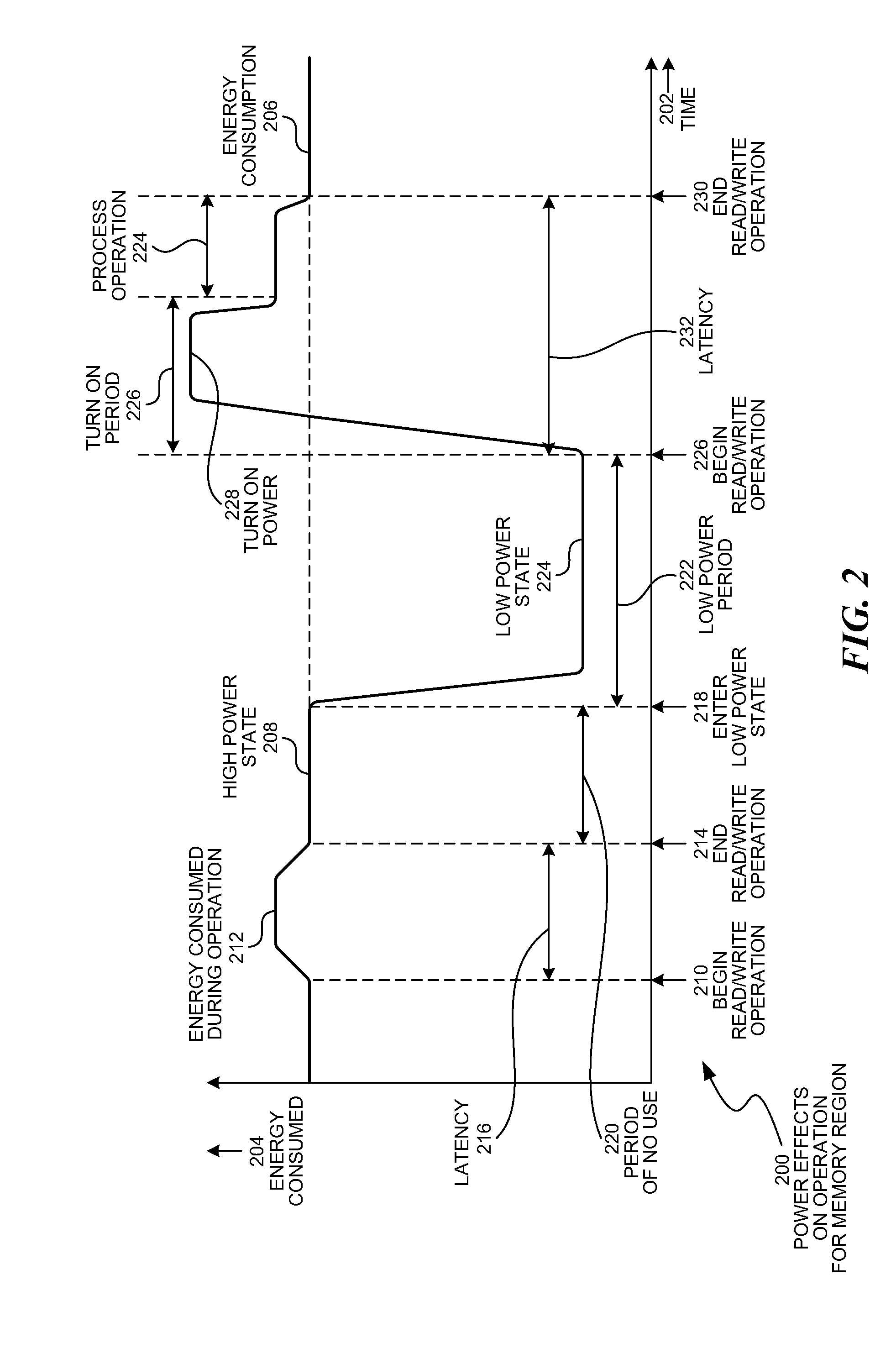Power aware memory allocation
- Summary
- Abstract
- Description
- Claims
- Application Information
AI Technical Summary
Benefits of technology
Problems solved by technology
Method used
Image
Examples
embodiment 100
[0025]Embodiment 100 may optimize power and performance by placing memory objects in memory regions that are appropriate for the memory object. Memory regions that are infrequently accessed may be operated in a low power state. In some cases, memory regions may be unused and thus empty. Memory objects may be consolidated so that objects that are frequently accessed may be stored in a high power region, and the memory objects may be moved from one region to another as the usage of the memory object changes.
[0026]Selecting an appropriate memory region for a memory object may take into consideration the anticipated usage pattern of the memory object, as well as the object type and other factors. In some cases, the memory object may be placed in a memory region on a temporary basis, with the anticipation that a later operation may move the memory object to another memory region at a later time.
[0027]A set of policies may be used to determine how memory objects may be placed in a device'...
embodiment 200
[0029]There are many different memory technologies, and each technology may have different characteristics. In general, many types of volatile memory may consume a small amount of energy to refresh the memory and may consume a higher amount of energy when a read or write operation is performed. Some memory technologies may have different energy impacts for read or write operations. In many memory technologies, the transition from low power state to high power state may cause some delay in responding to the request. Thus, a memory device operated at a low power state may consume less energy but may pay a performance price. A more detailed illustration of such an operation may be seen in embodiment 200 presented later in this specification.
[0030]In general, operating a memory device at a low power level may have an associated performance cost. In order to minimize the performance cost, those memory objects that are accessed infrequently or those that can tolerate a slower response tim...
embodiment 300
[0115]Embodiment 300 illustrates one method by which a placement manager may determine a memory region for a particular memory object. The method uses various metadata, policies, and memory topology to determine an optimized placement. The method also has a separate process for placement of unmovable objects.
[0116]The method of embodiment 300 may begin with receiving a memory topology in block 302 and polices for memory use in block 304.
[0117]The operations of blocks 302 and 304 may be performed during an initial startup of a device, and the memory topology and policies may be consistent while the device is operating. Some embodiments may allow for updating or changing the memory topology and policies during device operation. Such updates or changes may cause the memory placement process to operate differently afterwards.
[0118]The memory topology of block 302 may define the available memory devices, their connections, and their various characteristics. In many embodiments, some memo...
PUM
 Login to View More
Login to View More Abstract
Description
Claims
Application Information
 Login to View More
Login to View More - R&D
- Intellectual Property
- Life Sciences
- Materials
- Tech Scout
- Unparalleled Data Quality
- Higher Quality Content
- 60% Fewer Hallucinations
Browse by: Latest US Patents, China's latest patents, Technical Efficacy Thesaurus, Application Domain, Technology Topic, Popular Technical Reports.
© 2025 PatSnap. All rights reserved.Legal|Privacy policy|Modern Slavery Act Transparency Statement|Sitemap|About US| Contact US: help@patsnap.com



